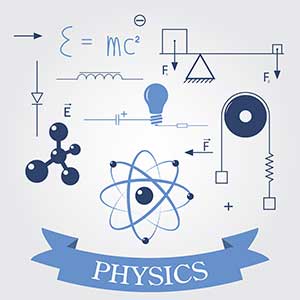Your cart is currently empty!
AP Chemistry
Grade:
9 – 12
Duration:
2 Semesters
Credit:
1.0
Prerequisites:
None
Materials:
See in the Materials tab below
Our Advanced Placement courses are not available for purchase at this time. They will re-open for enrollment in the 2026-2027 school year around July 2026.
Accelerate Online Academy’s AP Chemistry A&B course is taught at the college level and is designed to prepare students to take the Advanced Placement Examination. The topics covered in the course include the study of change, gases, thermochemistry, quantum theory, chemical bonding, crystals, phase changes, solutions, chemical kinetics, chemical equilibrium, acids and bases, entropy, electrochemistry,…
AP Chemistry is taught at the college level and is designed to prepare students to take the Advanced Placement Examination and to score high enough to earn college credit in those colleges that recognize the examination. College level textbooks are used. The course will cover all of the topics in the AP Chemistry course description. These include an introduction to chemistry as the study of change, gases, thermochemistry, quantum theory, chemical bonding, crystals, phase changes, solutions, chemical kinetics, chemical equilibrium, acids and bases, entropy, electrochemistry, nuclear chemistry, metallurgy, alkali and alkaline metals, nonmetallic metals, transition metals, organic chemistry, and synthetic and natural organic polymers.
Semester A
- The chemical elements are fundamental materials of matter, and all matter can be understood in terms of arrangements of atoms. These atoms retain their identity in chemical reactions.
- Chemical and Physical properties of materials can be explained by the structure and the arrangement of atoms, ions, or molecules and the forces between them.
- Changes in matter involve the rearrangement of atoms and/or the transfer of electrons.
- The laws of thermodynamics describe the essential role of energy and explain and predict the direction of changes in matter.
- Any bond or intermolecular attraction that can be formed can be broken. These two processes are a dynamic competition, sensitive to initial conditions and external perturbations.
- Chemical and Physical properties of materials can be explained by the structure and the arrangement of atoms, ions, or molecules and the forces between them.
- Changes in matter involve the rearrangement of atoms and/or the transfer of electrons.
- Any bond or intermolecular attraction that can be formed can be broken. These two processes are a dynamic competition, sensitive to initial conditions and external perturbations.
- Chemical and Physical properties of materials can be explained by the structure and the arrangement of atoms, ions, or molecules and the forces between them.
Semester B
- Chemical and Physical properties of materials can be explained by the structure and the arrangement of atoms, ions, or molecules and the forces between them.
- The laws of thermodynamics describe the essential role of energy and explain and predict the direction of changes in matter.
- Chemical equilibrium plays an important role in acid-base chemistry and in solubility.
- The atoms of each element have unique structures arising from interactions between electrons and nuclei.
- Energy is neither created nor destroyed, but only transformed from one form to another.
- The chemical elements are fundamental materials of matter, and all matter can be understood in terms of arrangements of atoms. These atoms retain their identity in chemical reactions.
- Chemical and Physical properties of materials can be explained by the structure and the arrangement of atoms, ions, or molecules and the forces between them.
Materials
Chemistry, Jason Overby. 15th Edition, ©2025 (Digital)
ISBN-10: 1265353077
ISBN-13: 978-1265353070
Princeton Review AP Chemistry Premium Prep, 2025
ISBN-10: 0593517601
ISBN-13: 978-0593517604
Advanced Microchem Kit (AP Chemistry Lab Kit by Quality Science Labs)
What TO EXPECT
See what our program is like after you get enrolled for parents and students.
Full-Time ProgramS
Our full time online tuition programs include enrollment for the school year (i.e. two semesters). Tuition varies based on our different programs. We recommend that students wishing to take 4 or more individual classes apply to our Full-Time Tuition Programs.
Highly Qualified Teachers 24/7 Access to Learning Platform Optional Weekly Group Synchronous Sessions And More!








